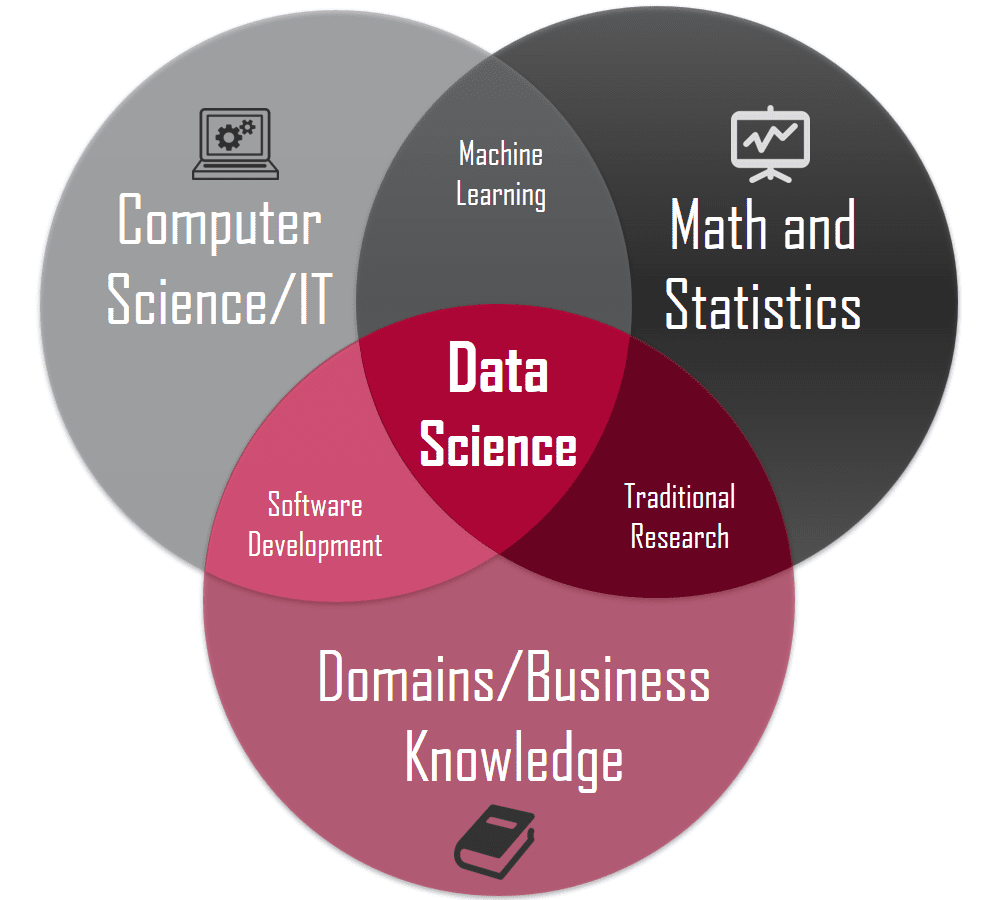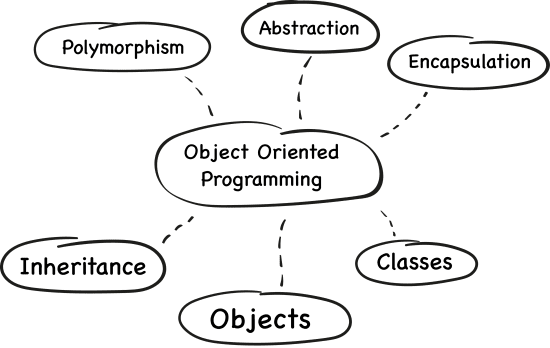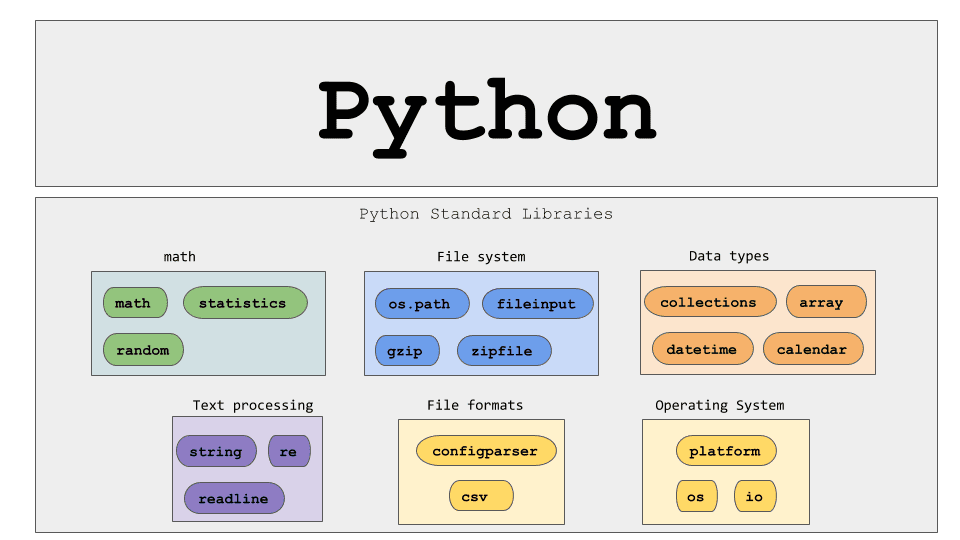Python is a high-level and interpreted programming language developed by Guido van Rossum in the late 1980s. Python’s clear syntax and intuitive approach to coding have made it simple to read and write. Python has grown to become one of the most frequently used programming languages in fields including data science, data analysis, web development, machine learning, artificial intelligence, and scientific computing. In this blog, we will explore the use of python in data science and how it has revolutionized the field.
What is Data Science?


Data science is a discipline that uses computational and statistical methods to glean knowledge and insights from large, complicated data collections.
Data science aims to derive useful knowledge and insights from data to improve decision-making, address issues, and open up new opportunities. Many different sectors, including business, healthcare, social sciences, and engineering, can benefit from the use of data science.
Data gathering, data cleaning and preprocessing, data analysis, model construction, and model evaluation are some of the phases involved in data science. Customers’ data, transaction data, sensor data, and social media data are just a few of the data sources that data scientists gather and evaluate.
In order to find patterns and links in the data, data scientists employ a number of tools and methods, including programming languages like Python and R, statistical programs like SAS and SPSS, and machine learning libraries like Scikit-Learn and TensorFlow. They can make use of Python in data science to anticipate the future and make judgments.
One of the main issues in Data Science is dealing with huge and complicated data sets that may contain missing or incomplete data, noise, or outliers. In order to extract valuable insights from big data sets, data scientists must manage and process them using specific methodologies.
Data visualization techniques are also used in data science to share insights with stakeholders. Charts, graphs, and interactive dashboards are just a few of the visualization tools that data scientists employ to make complex data sets easier for stakeholders to grasp and see patterns in.
Features that make the substantial use of python in data science
1.Object-oriented language


Python is an object-oriented language; everything in it is an object. This makes it simple to build reusable code and organize your work. Moreover, Python has a dynamic type system, so when you create a variable, you don’t need to define its type. Based on the value you give the variable, Python will automatically determine its type.
2. Python’s extensive packages
Python’s robust standard library, which offers a variety of modules and functions you may use to complete numerous tasks without writing a lot of code from scratch, is the most favorable use of Python in Data science.
You can extend the functionality of Python language because it has a substantial ecosystem of third-party libraries and packages available to you. Many of these packages are hosted by the Python Package Index (PyPI), a repository for open-source Python packages.
3. Python for beginners
Python is a great language for beginners who are just starting to learn to program since it is simple to learn and has a low entrance barrier. Python’s clear and basic syntax makes it simple to read and comprehend, even for non-programmers.
4. Python’s Portability
The portability of Python is another important benefit. Windows, Mac OS X, Linux, and Unix are just a few of the platforms on which Python code can be executed. As a result, writing code that can run on various platforms without requiring substantial changes is made simple.
Libraries and modules of Python
The Use of Python in Data Science can be attributed to its wide range of libraries and modules. Let’s have a look at some of Python’s most well-liked libraries.


1. NumPy
Python’s NumPy library is a strong tool for numerical computation. For Python’s numerical operations, it offers a strong framework for array and matrix calculation. NumPy provides a high-performance multidimensional array object and methods for using these arrays.
2. Pandas
Python’s Pandas library offers high-performance data structures and data analysis tools. Before conducting an analysis, you can load, clean, and preprocess your data using Pandas. It offers strong capabilities, like data frames, series, and panels, for working with structured data.
3. Matplotlib
Pythons’ matplotlib is a popular library for making static visuals like line charts, scatter plots, and histograms. It offers several different tools for plot creation, including tools for labeling, formatting, and customization.
4. Seaborn
Heatmaps and pair plots can be created using the higher-level interface offered by Seaborn. A variety of tools are provided by Seaborn for the creation of statistical plots and the visualization of data linkages.
5. Scikit-Learn
Scikit-Learn offers machine learning and statistical modeling capabilities, including classification, regression, and clustering.
6. TensorFlow
A low-level library, TensorFlow is used to create and train machine learning models. It offers resources for creating deep learning and neural network models. Artificial intelligence, deep learning, and machine learning all make extensive use of TensorFlow.
7. Keras
Keras is a high-level neural network API that can be used with TensorFlow, Theano, or CNTK. Keras provides a simplified interface for building neural networks and deep learning models. It is extensively used in artificial intelligence, deep learning, and machine learning.
Python offers a significant collection of external packages and modules that can be used to increase the capability and use of Python in Data Science. The libraries we have discussed in this blog are just a few of the many powerful tools available in python.
Use of Python in Data Science
Python is one of the most often used programming languages for data science. Let’s examine the applications of Python in data science in this blog.
1. Data manipulation and analysis
The use of Python in data science offers a number of strong libraries, including NumPy, Pandas, and SciPy, that provide the means of manipulating and analyzing data. Python’s numerical operations leverage the robust array and matrix processing environment provided by NumPy.
High-performance data structures and data analysis tools are offered by the Pandas library. Before conducting an analysis, you can load, clean, and preprocess your data using Pandas. For scientific and technical computing, SciPy offers methods for optimization, integration, interpolation, and linear algebra.
2. Data visualization
Use of Python in Data Science offers the generation of interactive and static visualizations of your data using one of the many well-liked visualization tools available in Python, such as Matplotlib, Seaborn, and Plotly.
For making static visuals like line charts, scatter plots, and histograms, one common package is Matplotlib. Heatmaps and pair plots can be made using the higher-level interface offered by Seaborn. For web-based applications, Plotly is a library that offers interactive visualizations.
3. Machine learning
Machine learning libraries including Scikit-Learn, Keras, and TensorFlow have made the use of Python in Data Science more frequent. Scikit-Learn provides a collection of efficient tools for machine learning and statistical modeling, including classification, regression, and clustering. A high-level neural network API called Keras can be used in conjunction with TensorFlow, Theano, or CNTK.
4. Deep learning
Deep learning, a branch of machine learning that employs neural networks with numerous layers, is another area in which Python is frequently employed. Python’s Keras, TensorFlow, and PyTorch deep learning packages are the most widely used. Whereas Keras and TensorFlow offer high-level APIs for creating and training deep learning models, PyTorch is a library for creating such models.
5. Natural Language Processing
Python is also employed in natural language processing, which examines human language. The three most widely used Python NLP libraries are NLTK, Spacy, and Gensim. Tokenization, stemming, and tagging are a few of the tools for natural language processing that are provided by NLTK. A package for NLP called Spacy offers effective tokenization and parsing. Gensim is a package that offers tools for text classification, topic modeling, and document similarity.
Future of use of Python in Data Science
Python has a promising future in Data Science. Here are a few reasons why:
Big and Active Community:
Python has a sizable and active community of users and developers who consistently produce new data science tools and modules. This group assists with bug fixes, performance enhancements, and knowledge sharing.
Easy Language:
Python is easy to learn and has a basic syntax, making it suitable for novices. This ease of learning allows Data Scientists to quickly prototype and test ideas and iterate quickly on their projects.
Compatibility with Other Languages:
Python is easily integrated with other programming languages, making it simpler to utilize in complex applications.
Scalability:
Python can be used with distributed computing platforms like Apache Spark and Hadoop and has been shown to be scalable for processing enormous datasets.
Industry Adoption:
Python has been widely used in a variety of sectors, including government, technology, healthcare, and finance. This adoption demonstrates Python’s viability as a data science tool and its applicability in practical contexts.
Conclusion
To simplify, Python is a strong and adaptable language that is frequently used in data research. Owing to its robust data manipulation and analysis tools, visualization libraries, machine learning and deep learning libraries, and natural language processing libraries, the use of Python in Data Science has grown all around among data scientists.



